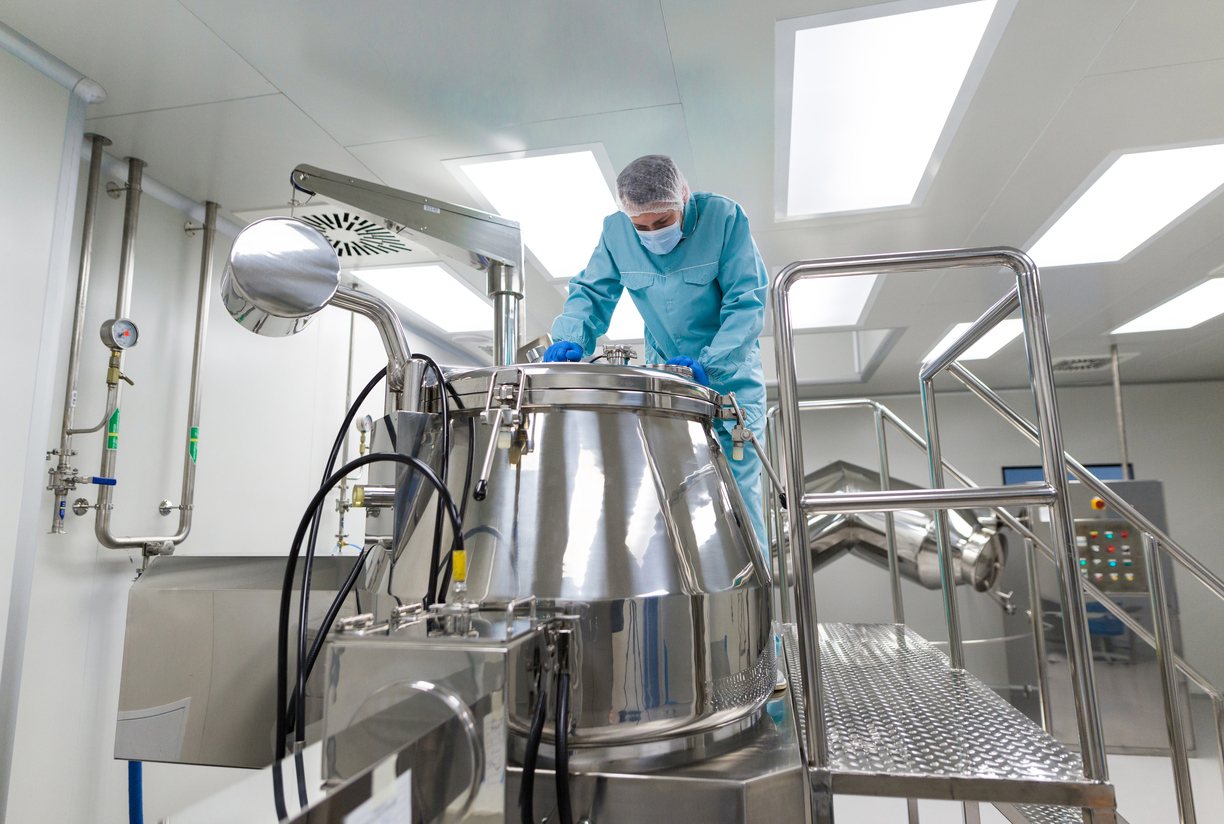Pharmaceutical Tank Production
- Blog
- Pharmaceutical Tank Production
Pharmaceutical Tank Production
Pharmaceutical tanks play a critical role in drug manufacturing processes. These tanks ensure that drugs are produced in a sterile environment and prevent contamination. To ensure that products are manufactured without harming human health, high hygiene standards are observed in the design and production of pharmaceutical tanks. Strict regulations in the pharmaceutical industry have further increased the importance of pharmaceutical tanks. Produced in compliance with international standards such as FDA and GMP, these tanks optimize the production process and ensure the delivery of high-quality products to the market. Additionally, these tanks are designed to preserve the properties of sensitive products. For example, during the production of biological products, precise temperature control and contamination-preventing features are of vital importance. As the scope of use for pharmaceutical tanks expands, technology and innovations in this field have also advanced. These tanks support not only production processes but also laboratory testing and R&D activities, contributing to the development of the industry. Furthermore, the use of these tanks supports efforts to minimize businesses’ environmental impact. The use of eco-friendly materials promotes sustainable production practices and reduces energy consumption. Today, pharmaceutical tanks provide production flexibility, enabling businesses to safely manufacture different products in the same environment. This allows production lines to operate more efficiently and reduces businesses’ costs. Especially in unexpected situations such as pandemics or sudden demand surges, the adaptability of pharmaceutical tanks offers a critical advantage. Pharmaceutical tanks are made from durable materials such as stainless steel. The inner surfaces of the tanks are smooth and specially polished to prevent microbial growth. Additionally, they are equipped with CIP (Clean-in-Place) and SIP (Sterilize-in-Place) systems, which provide efficient cleaning and sterilization. The design of the tanks can be customized based on the sensitivity of the drugs. Features such as temperature control, pressure resistance, and liquid mixing systems can be added to meet various production requirements. Furthermore, some tanks are equipped with automation systems to optimize critical processes. These systems monitor the production process, providing operators with real-time information and enabling higher production efficiency. Another important aspect of their technical features is the tanks’ long-term durability. Especially in the biotechnology sector, tanks are manufactured to withstand aggressive chemicals and changing environmental conditions. This helps maintain product quality while assisting businesses in reducing their costs. Additionally, the modular structure of the tanks allows them to adapt quickly and efficiently to different production needs. Modern pharmaceutical tanks are equipped with smart sensors, enabling continuous monitoring of production processes. These sensors measure temperature, pressure, and liquid levels, providing operators with instant feedback. This allows potential issues to be identified in advance, preventing production interruptions. Pharmaceutical tanks are used in many areas of the pharmaceutical sector: In addition, pharmaceutical tanks are widely used in biotechnological applications, particularly in gene therapy and cell culture production. The versatile design of these tanks allows for applicability in various pharmaceutical processes. Furthermore, these tanks also play an important role in the production of dietary supplements and cosmetics. The key elements to consider in pharmaceutical tank production include: Material Quality: The materials used in the tanks must be corrosion-resistant and suitable for sterilization processes. High-quality materials ensure the tanks’ longevity and the uninterrupted continuation of production processes. Compliance with Standards: Production in accordance with standards such as FDA, GMP, and ISO is mandatory. These standards-compliant processes guarantee the reliability of the tanks and their effectiveness in pharmaceutical production processes. Customization: Designing the tanks to suit the customer’s production processes carries great importance. This enables businesses to meet their specific needs and makes production processes more efficient. Energy Efficiency: In modern production practices, energy efficiency is a critical factor. Low energy consumption in pharmaceutical tanks provides cost savings and minimizes environmental impacts. To ensure the effective operation of pharmaceutical tanks, regular maintenance must be performed. The performance of CIP and SIP systems should be continuously monitored and addressed as needed. Additionally, the inner surfaces of the tanks should be regularly checked for wear and deformation. Maintenance performed by trained personnel ensures the tanks’ longevity and the uninterrupted continuation of pharmaceutical production processes. The integration of IoT-based systems into maintenance processes can further enhance tank efficiency. It is also important, from a sustainability perspective, that the cleaners used in tank maintenance are biocompatible and have low environmental impacts. This helps the industry align with eco-friendly goals. Furthermore, regular inspection of the seals and gaskets used in the tanks eliminates the risk of leaks, enhancing reliability. With advancements in technology, numerous innovative solutions are being implemented in pharmaceutical tank production. IoT sensors enable the real-time monitoring of the tanks’ internal conditions. This allows issues to be identified and resolved quickly in advance. These systems, particularly in large-scale production, minimize the error rate. Additionally, energy-efficient designs and eco-friendly materials contribute to sustainability goals. Modern pharmaceutical tanks offer solutions that are both environmentally sensitive and high-performing. Innovative technologies reduce energy costs while increasing production capacity. In the future, technologies such as artificial intelligence and machine learning are expected to play a significant role in making pharmaceutical tanks smarter and more efficient. These innovations will optimize the overall performance of the tanks, better meeting the needs of the pharmaceutical industry. At the same time, the use of next-generation materials could reduce the weight of the tanks and enhance their portability.The Importance of Pharmaceutical Tanks in Industry
Technical Features of Pharmaceutical Tanks

Applications of Pharmaceutical Tanks
Considerations in Pharmaceutical Tank Production
Maintenance and Management of Pharmaceutical Tanks
Innovative Solutions in Pharmaceutical Tanks


